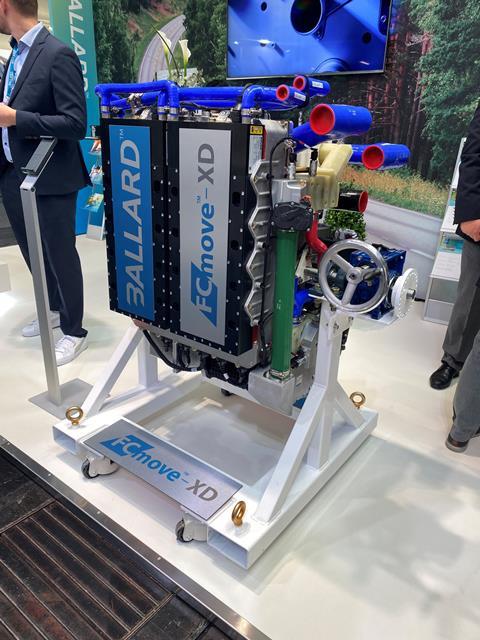Hydrogen fuel cell specialist, Ballard Power Systems announced today its strategy ‘local for local’ where it plans to deepen its global manufacturing footprint in Europe, the United States and China to support global market demand growth through 2030.
As part of this strategy, Ballard has entered into an investment agreement with the Government of Anting in Shanghai’s Jiading District to establish its new China headquarters, membrane electrode assembly (MEA) manufacturing facility and R&D center at a site strategically located at the Jiading Hydrogen Port, located in one of China’s leading automotive industry clusters.

Ballard intends to invest around $130 million over the next three years, allowing for an annual manufacturing capacity of approximately 13 million MEAs at the new MEA production plant, which will supply approximately 20,000 engines.
In 2021, Ballard completed its MEA manufacturing expansion in Canada, which is critical as the MEA is the core technology and limiting factor for Ballard’s global fuel cell engine production capabilities. With the new MEA capacity coming online in China, Ballard now expects its global MEA capacity to support total demand requirements through the second half of the decade.
This investment is expected to reduce MEA manufacturing costs, align with China’s fuel cell value chain localization policy, and position Ballard more strongly in the hydrogen fuel cell demonstration cluster regions and for the post-subsidy market.
The facility is planned to be in operation in 2025 to meet expected market demand in China, including from the Weichai-Ballard Joint Venture (WBJV) for the bus, truck and forklift markets, as well as other opportunities outside the WBJV scope. “To be competitive in China requires investment in China,” commented Alfred Wong, Ballard China CEO.
“Our global manufacturing vision for 2030 is to have scaled ‘local for local’ manufacturing of leading fuel cell engines and components in our core regional markets of Europe, North America and China to support future industry growth patterns and volumes across our verticals. In the case of China, we already have volume manufacturing capacity for fuel cell engines, bipolar plates and stack assembly at our WBJV. With our continued high conviction on long-term scaled adoption in China of fuel cell electric vehicles for medium- and heavy-duty motive applications, we are now addressing long-term capacity in that market for our proprietary MEAs,” said Randy MacEwen, Ballard’s Chief Executive Officer.
“This new MEA manufacturing facility will significantly reduce MEA production costs, improve China market access and meet long-term market demand, including providing MEA supply to our Weichai-Ballard JV. We are thrilled to be partnering with Anting, Jiading District, which has quickly become a key hydrogen technology hub in China.”
At the same location, Ballard will also establish an R&D and innovation centre. The center’s focus will be on MEA research in order to accomplish significant business technological improvements, assist cost-cutting goals, and involve the expanding China local supply chain for fuel cell materials and components. Ballard also stated today that it has signed a non-binding memorandum of understanding with Weichai Power, under which Weichai Power intends to invest 2% of its new MEA manufacturing firm.













